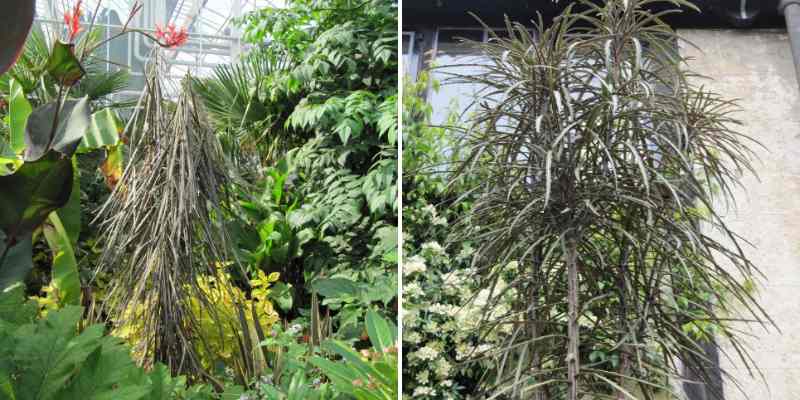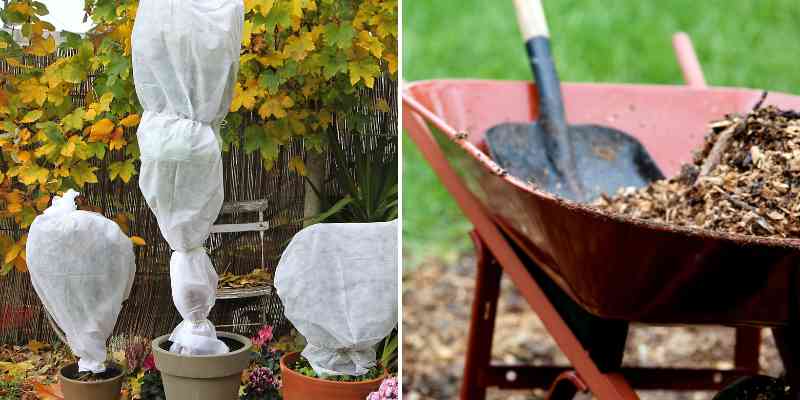Pseudopanax is a plant native to New Zealand, where winters are relatively mild. Depending on the species (such as Pseudopanax crassifolius or Pseudopanax ferox), this plant can tolerate a few degrees below zero, but generally prefers mild winter temperatures (above -5 °C). In France, it is on the ocean-facing side, mild and humid, that these relatives of Fatsias will find the conditions they enjoy. Beyond that, protective measures are necessary. Here are our tips for protecting your Pseudopanax in winter.
Find all our cultivation tips in our guide Pseudopanax: planting, growing and care.

Choosing the right location
- In the ground: plant it sheltered from cold winds, ideally against a south or west-facing wall that will store the sun's warmth.
- In a pot: if your Pseudopanax is in a pot, you will have more flexibility to move it. Place it in a protected spot in winter, such as an unheated conservatory or a cold greenhouse, near a bright window.

Protecting the roots and trunk
The roots and base of the plant are particularly sensitive to cold. Here are some effective methods to protect them:
- Mulching: in autumn, apply a good layer of mulch around the base of the plant (dead leaves, straw, or bark). This will help retain heat in the soil and limit damage in case of frost.
- Fleece: in the event of severe frosts forecasted, wrap the plant with fleece (available at most garden centres). It is lightweight, allows air and light to pass through, while protecting against freezing temperatures. Make sure to secure the fleece well so it doesn't blow away.

Limit watering in winter
The Pseudopanax enters a period of dormancy during winter, so it is important to significantly reduce watering. Excess water combined with low temperatures can lead to root rot. Water very lightly, just enough to prevent the soil from becoming completely dry, especially if the plant is in a pot. In the ground, it is often unnecessary to water in winter.
Monitor temperatures
If you live in an area where temperatures regularly drop below -5 °C, it is best to bring your Pseudopanax indoors or into a cold greenhouse for the winter. The more sensitive species (Pseudopanax lessonii and Pseudopanax laetus) cannot withstand prolonged frost. Indoors, place it in a bright, cool room, but unheated (ideally around 5 to 10 °C), such as a conservatory or a garage with large windows.
Ventilate and illuminate
Even during winter, the Pseudopanax needs light. If you bring it indoors, make sure to place it near a window where it can benefit from natural light. Avoid dark corners.
Additionally, if you use fleece, remember to ventilate it from time to time to avoid moisture buildup that could encourage diseases.
Protecting a Pseudopanax in a pot for winter
A potted Pseudopanax should be brought indoors as soon as temperatures drop below 5 °C. Place it in a protected area such as a conservatory, an unheated greenhouse, a winter garden, or any other frost-free location, provided it is sufficiently bright.
During winter, reduce watering: water only when the substrate becomes dry on the surface, to prevent root rot. Of course, it is unnecessary to fertilise during this dormant period. When all risk of frost has passed in spring, gradually take it outside by acclimatising it to the outdoors, first placing it in the shade before gently reintroducing it to full sun.
Finally, never forget that potted plants are more sensitive to cold, as their roots are less protected than those in the ground. To help insulate the pot, you can:
- Elevate the pot with blocks or a saucer, to avoid direct contact with the cold ground.
- Wrap the pot with insulating material (bubble wrap or thick fabric) to limit temperature fluctuations.
































Comments